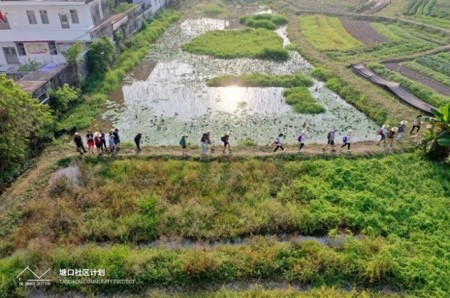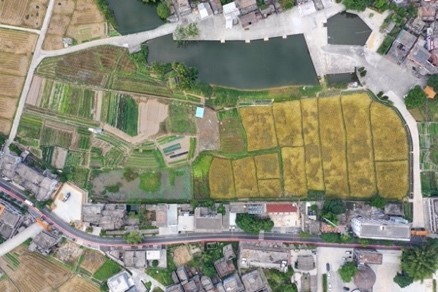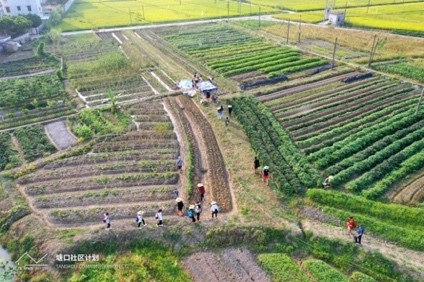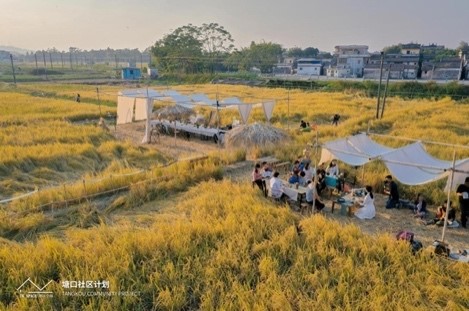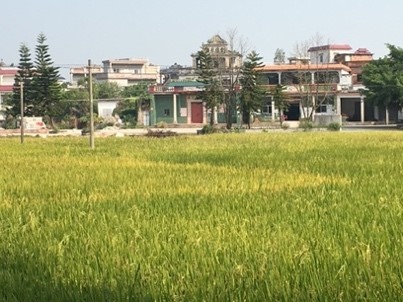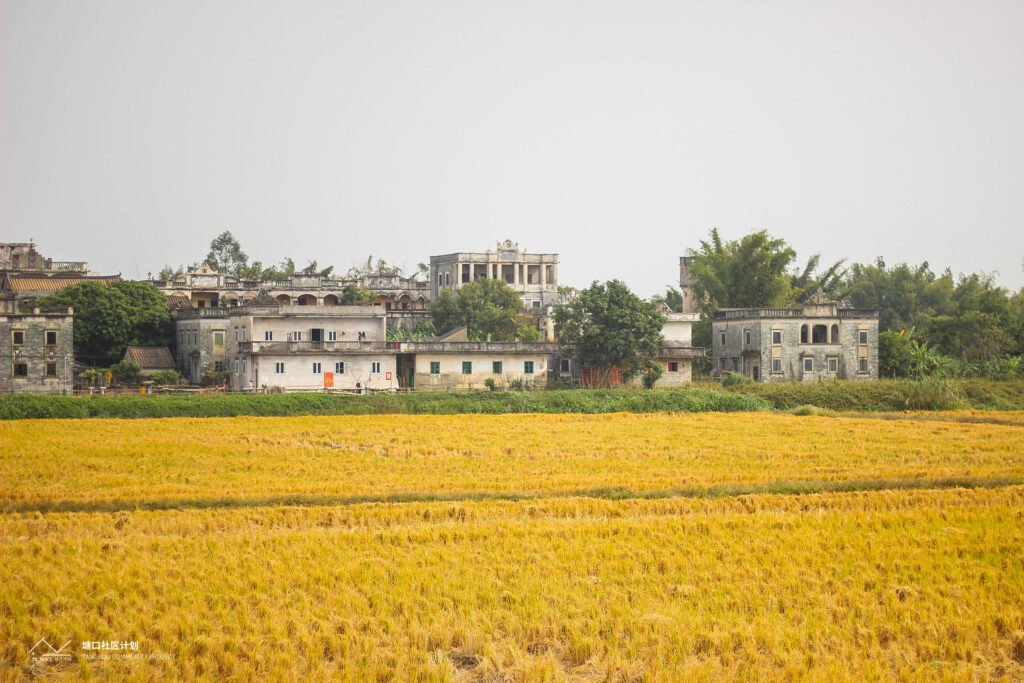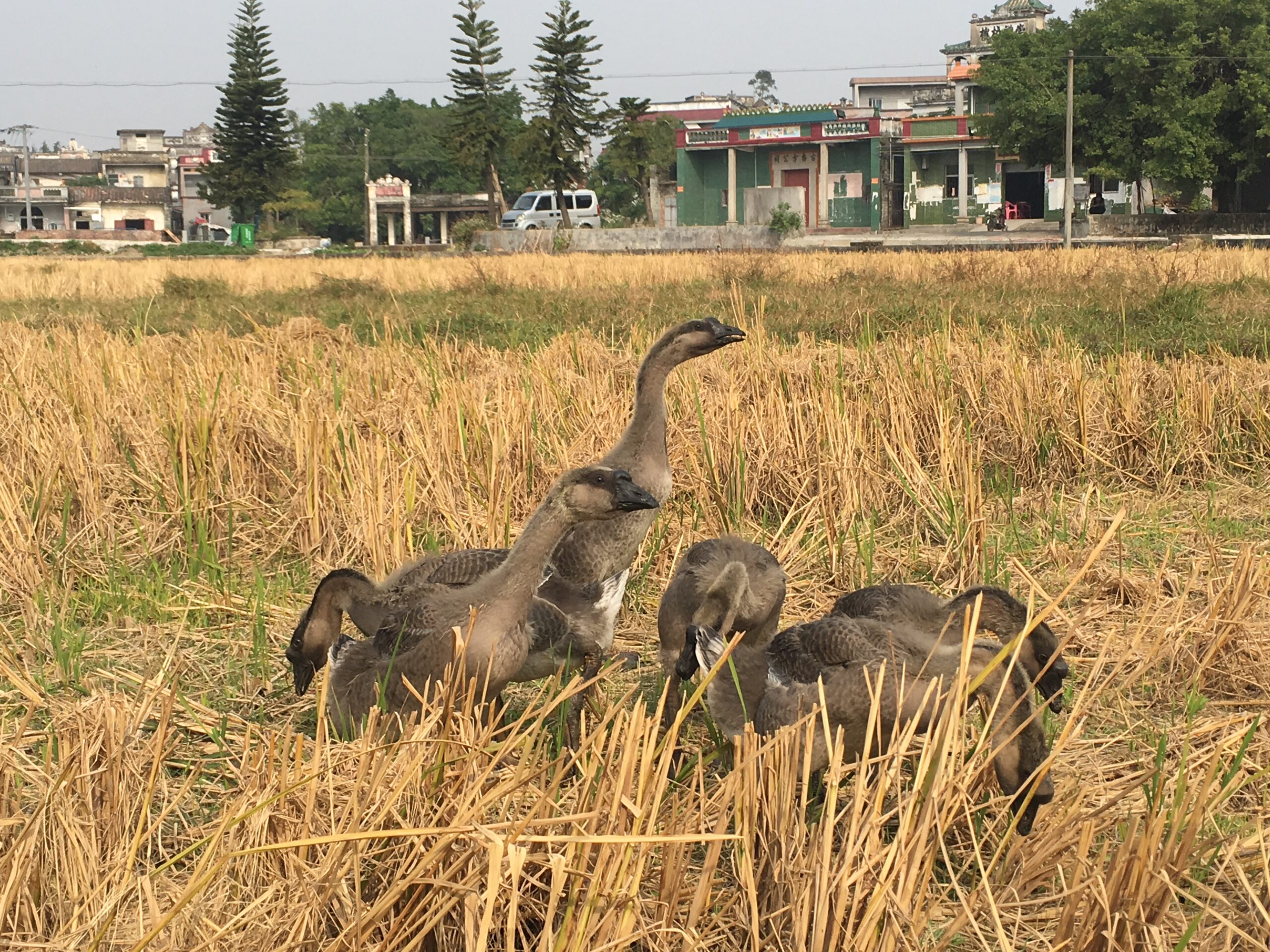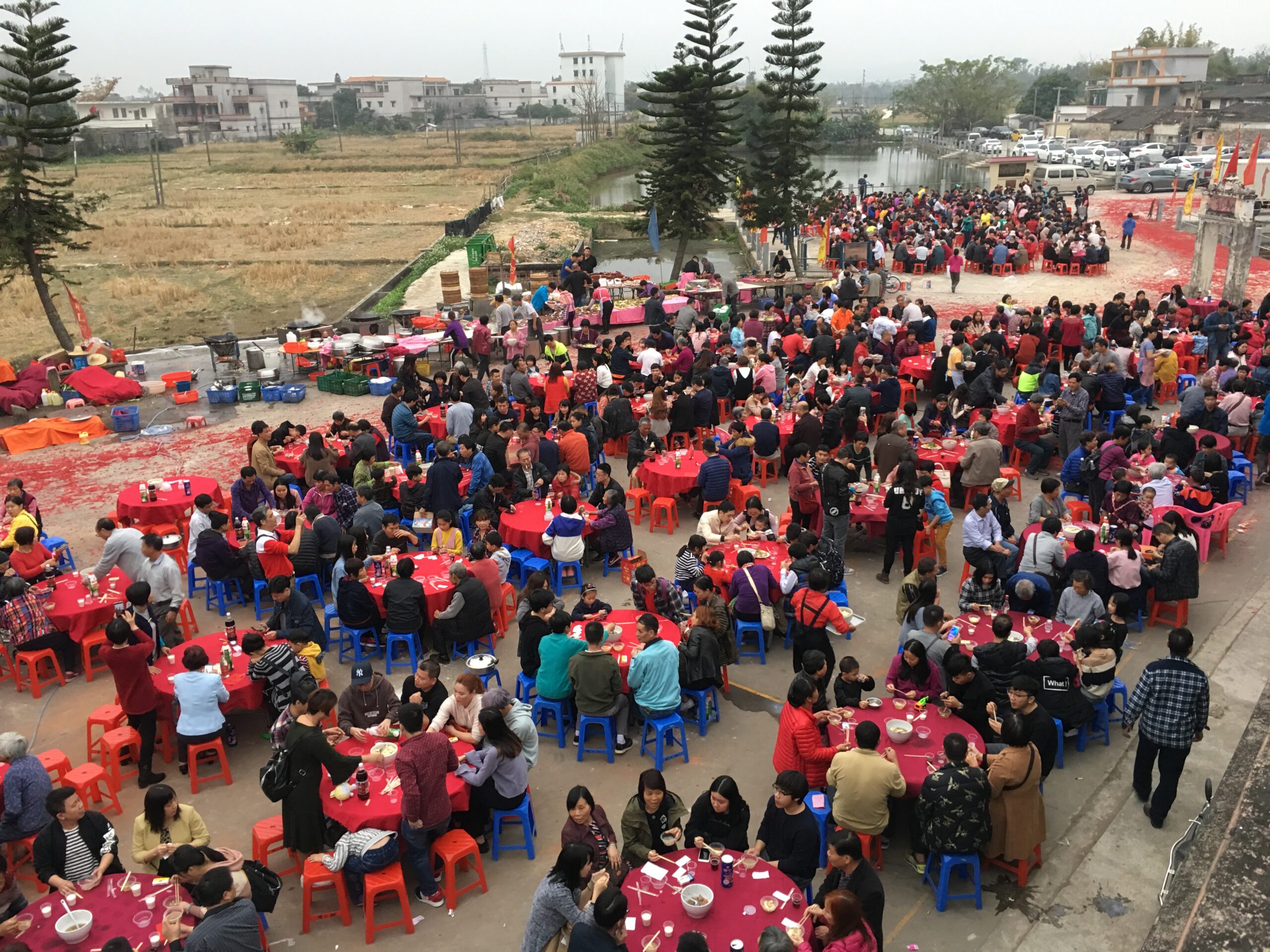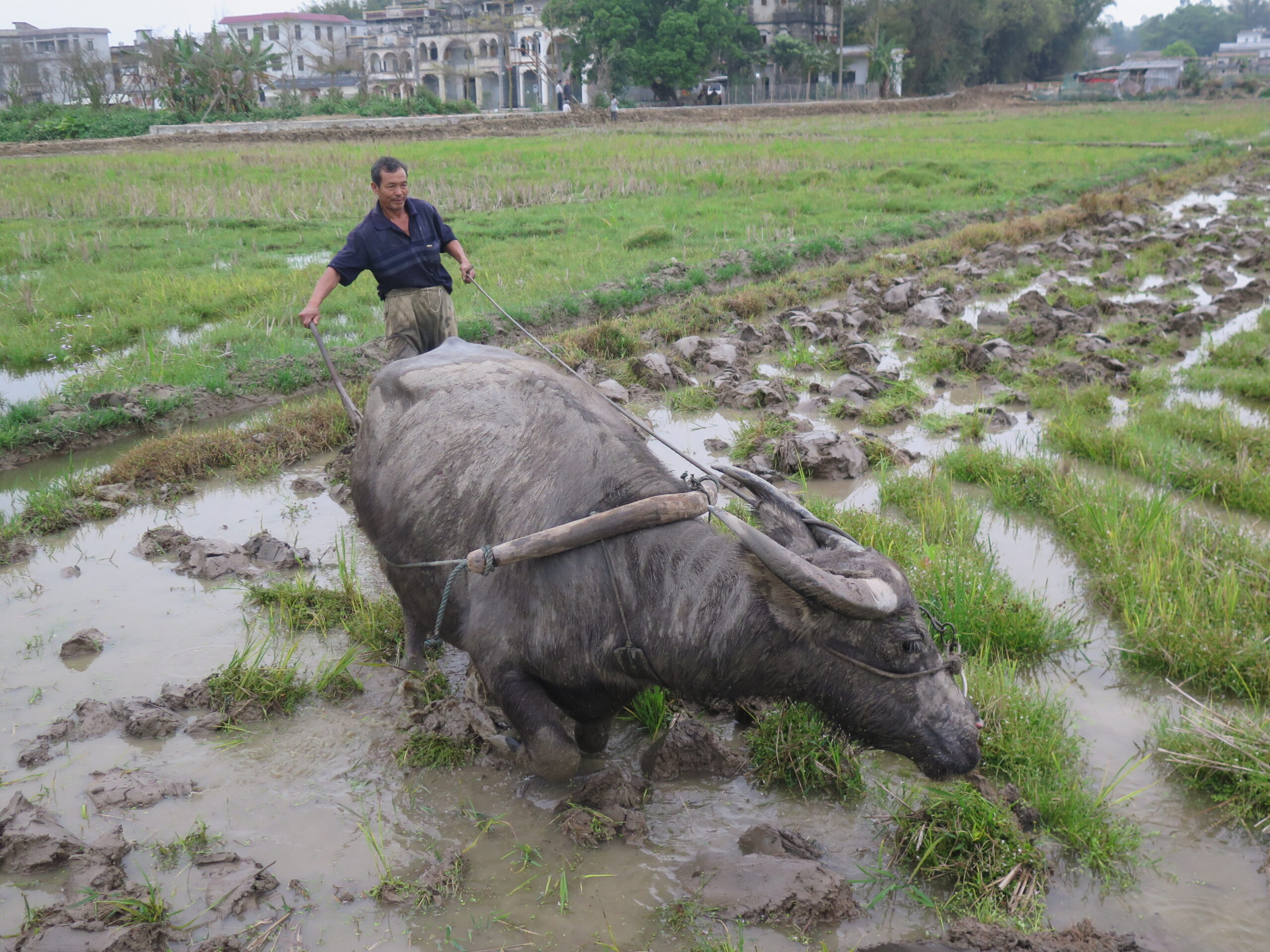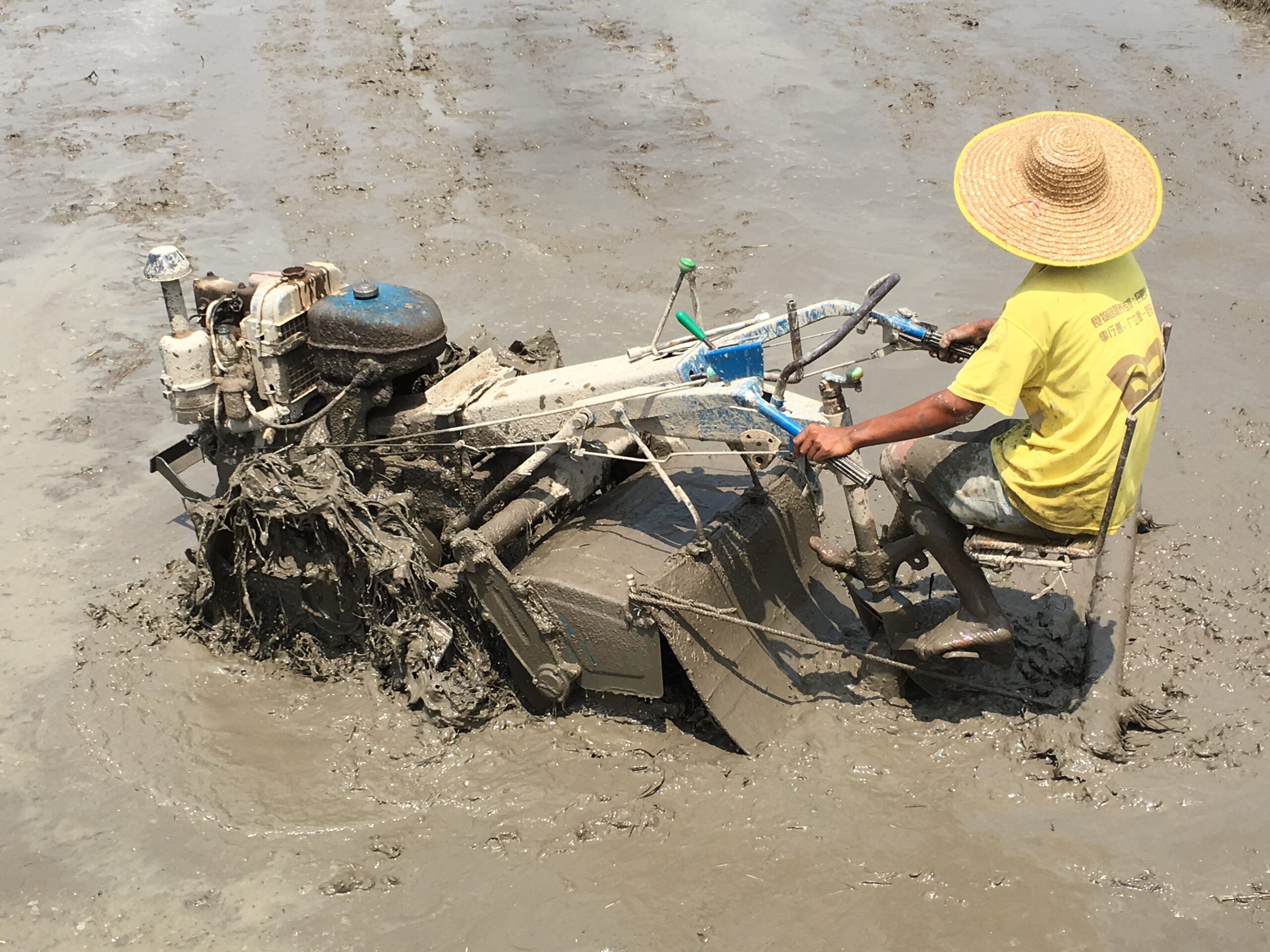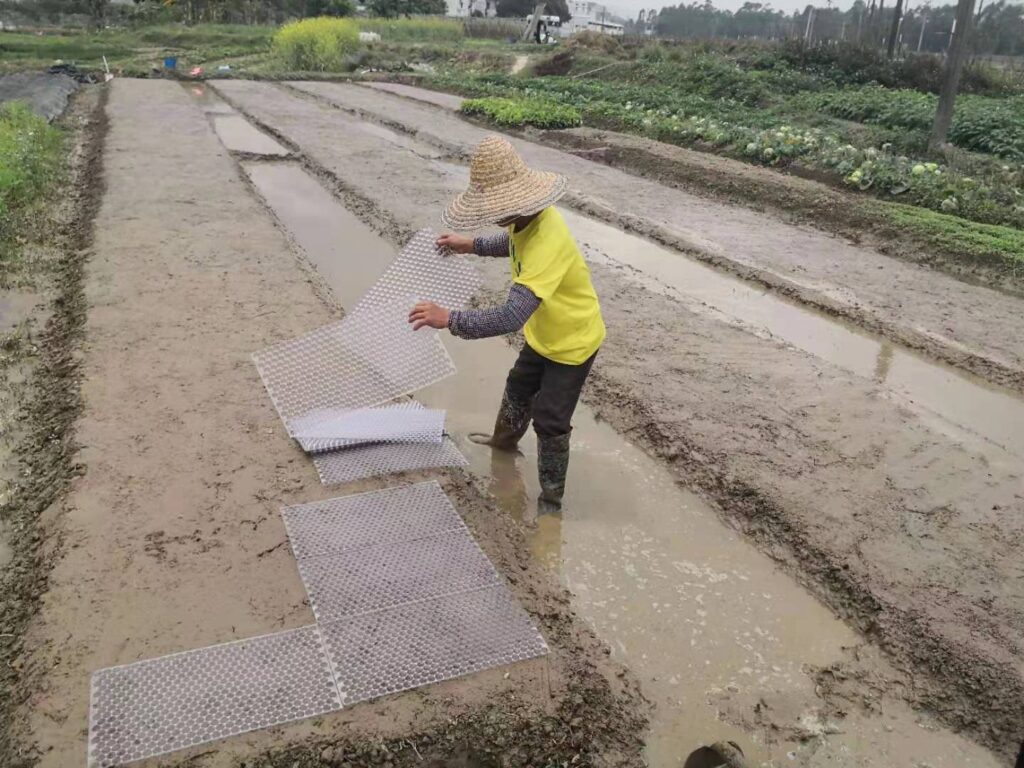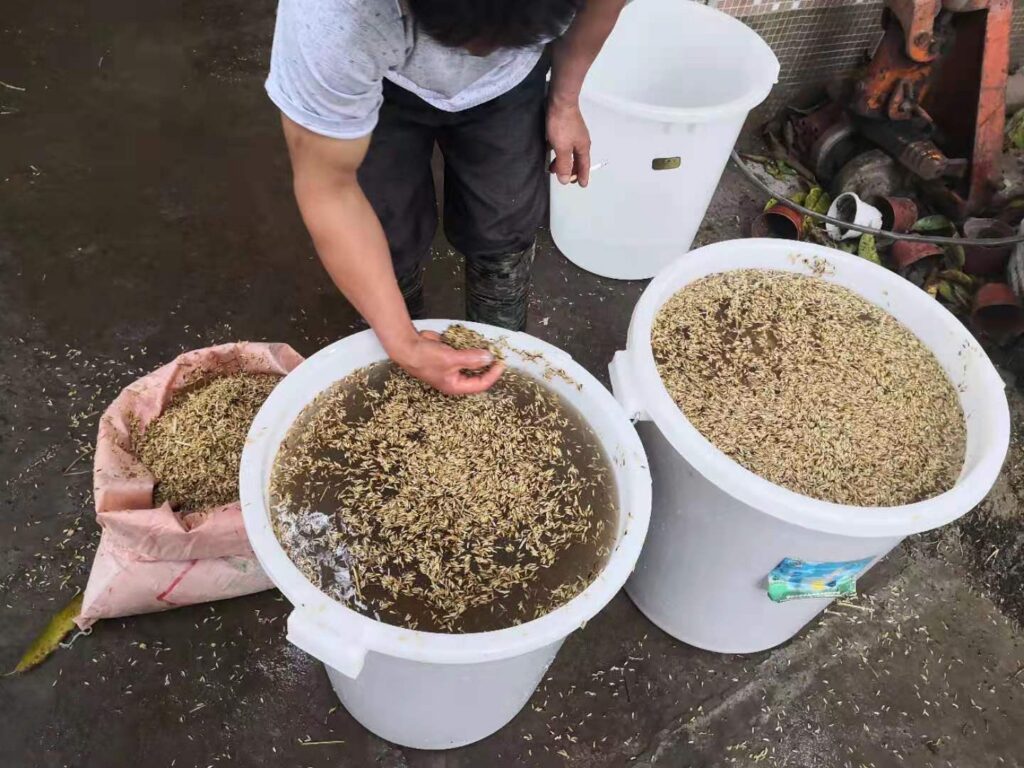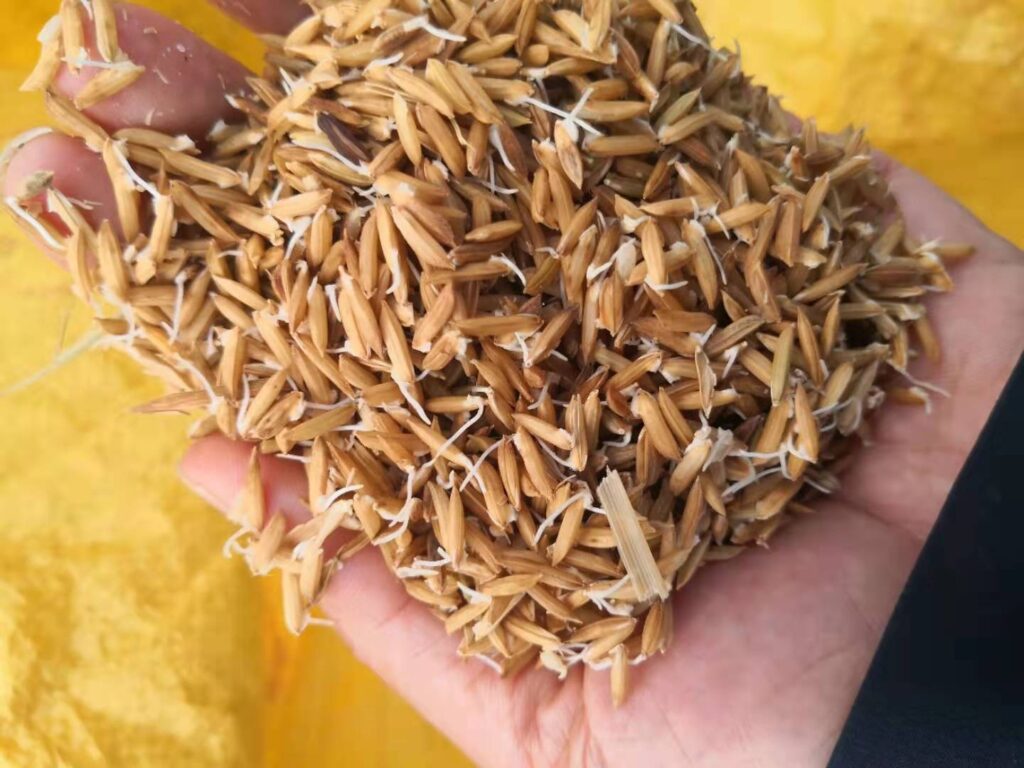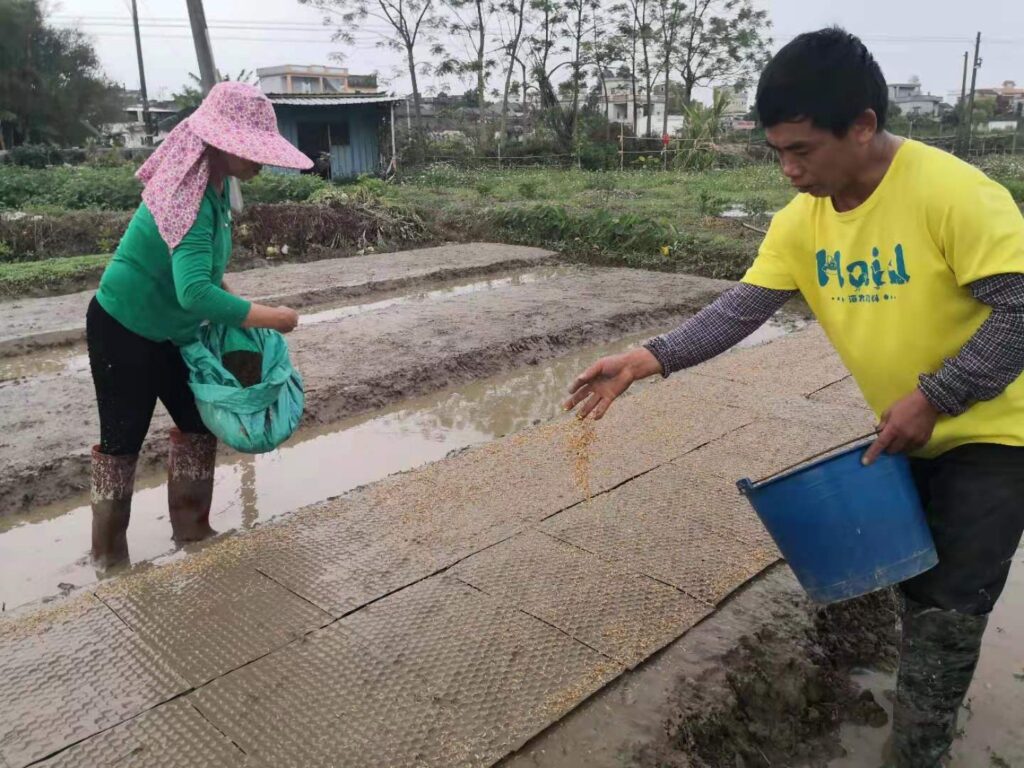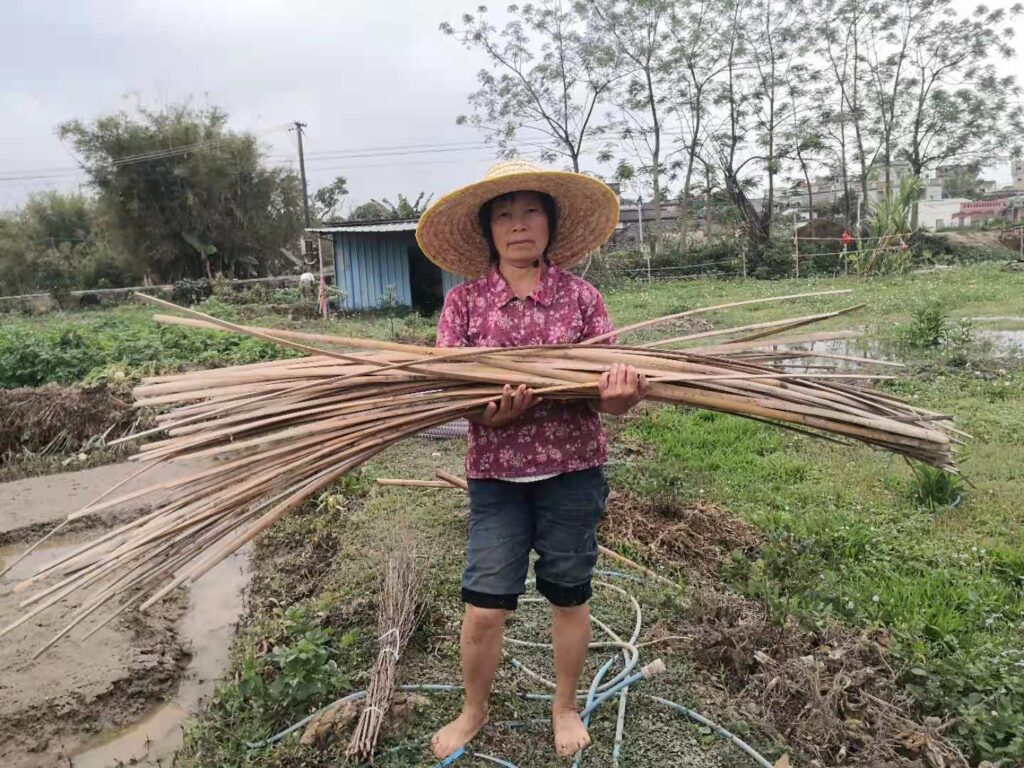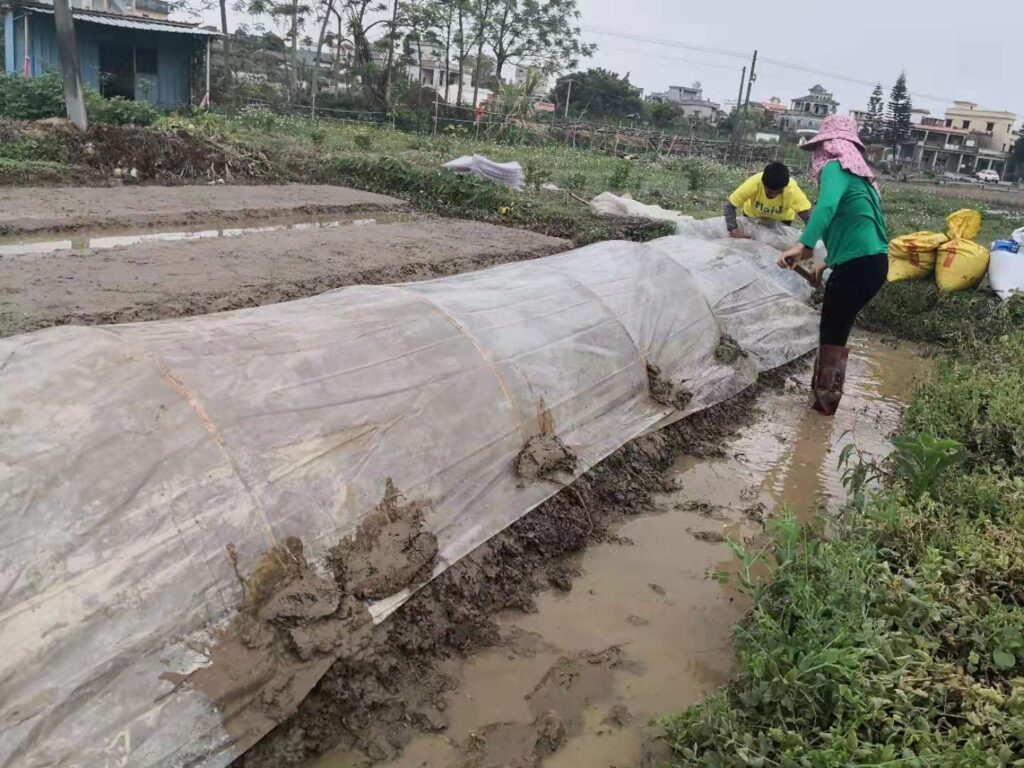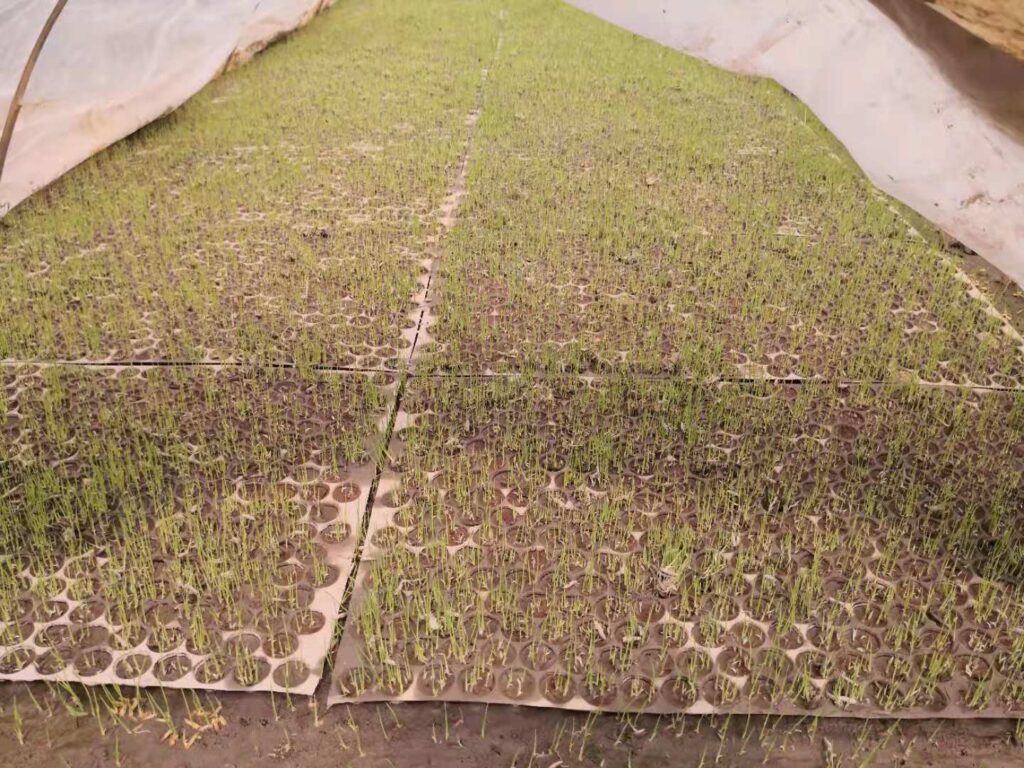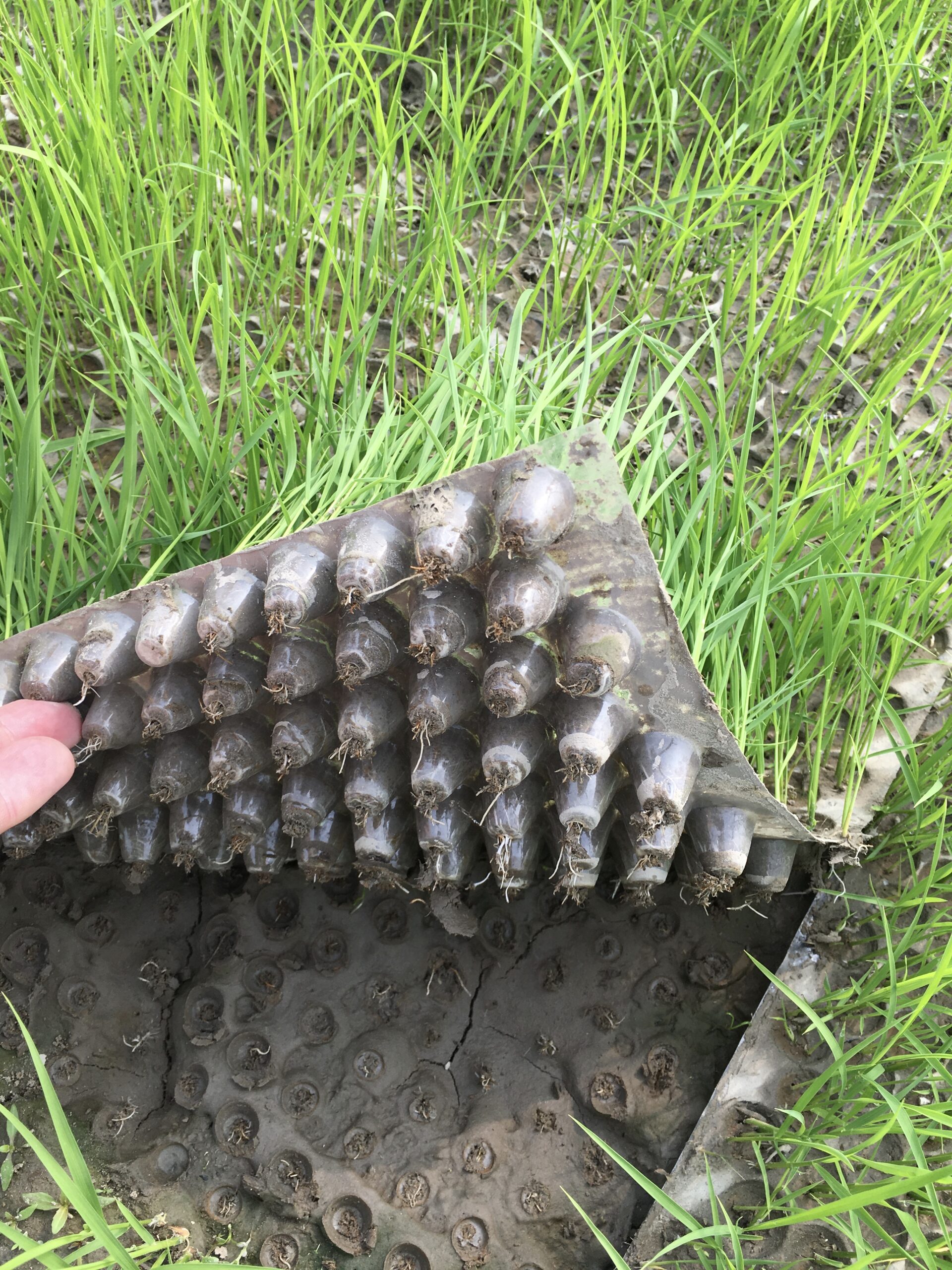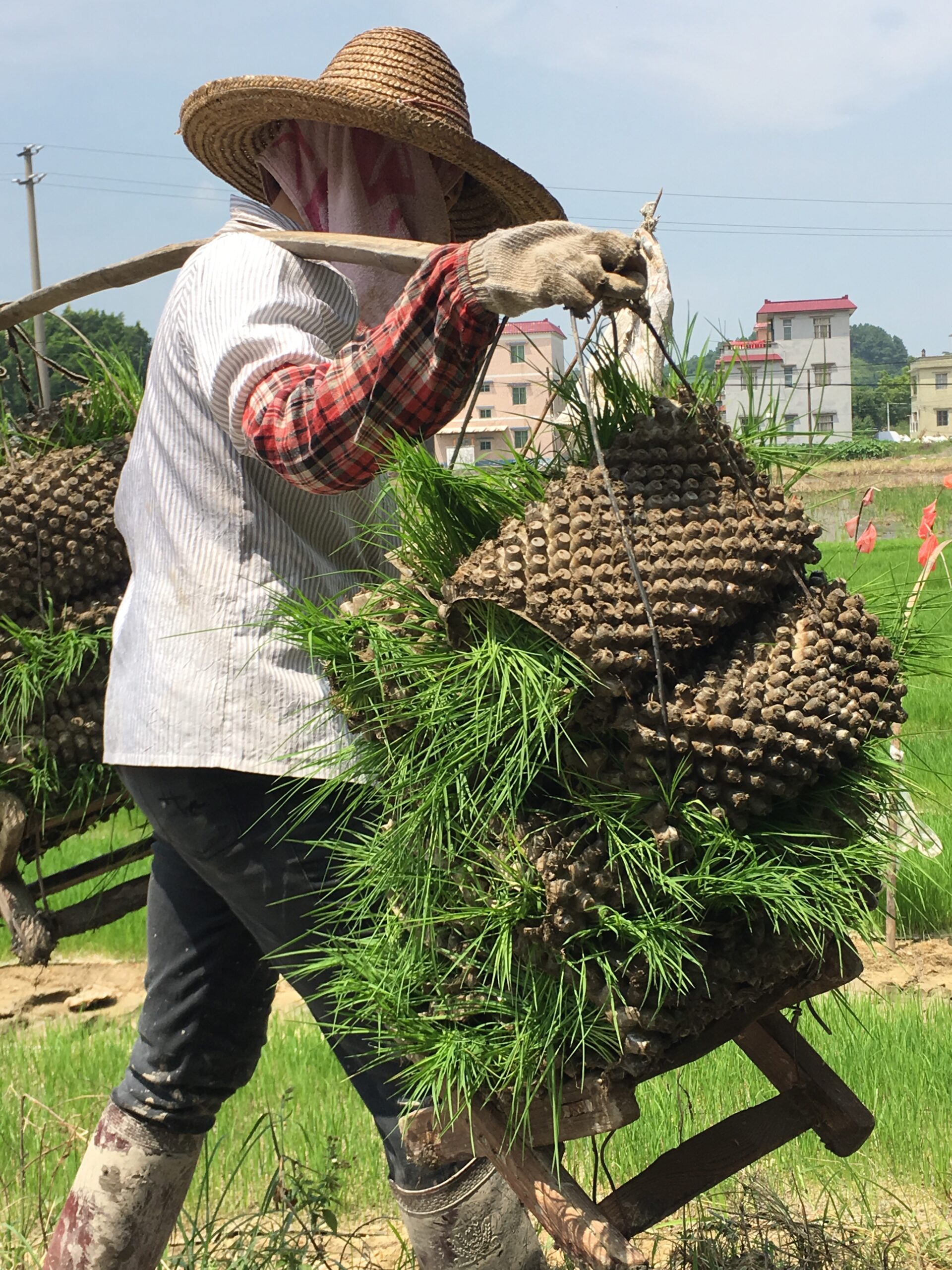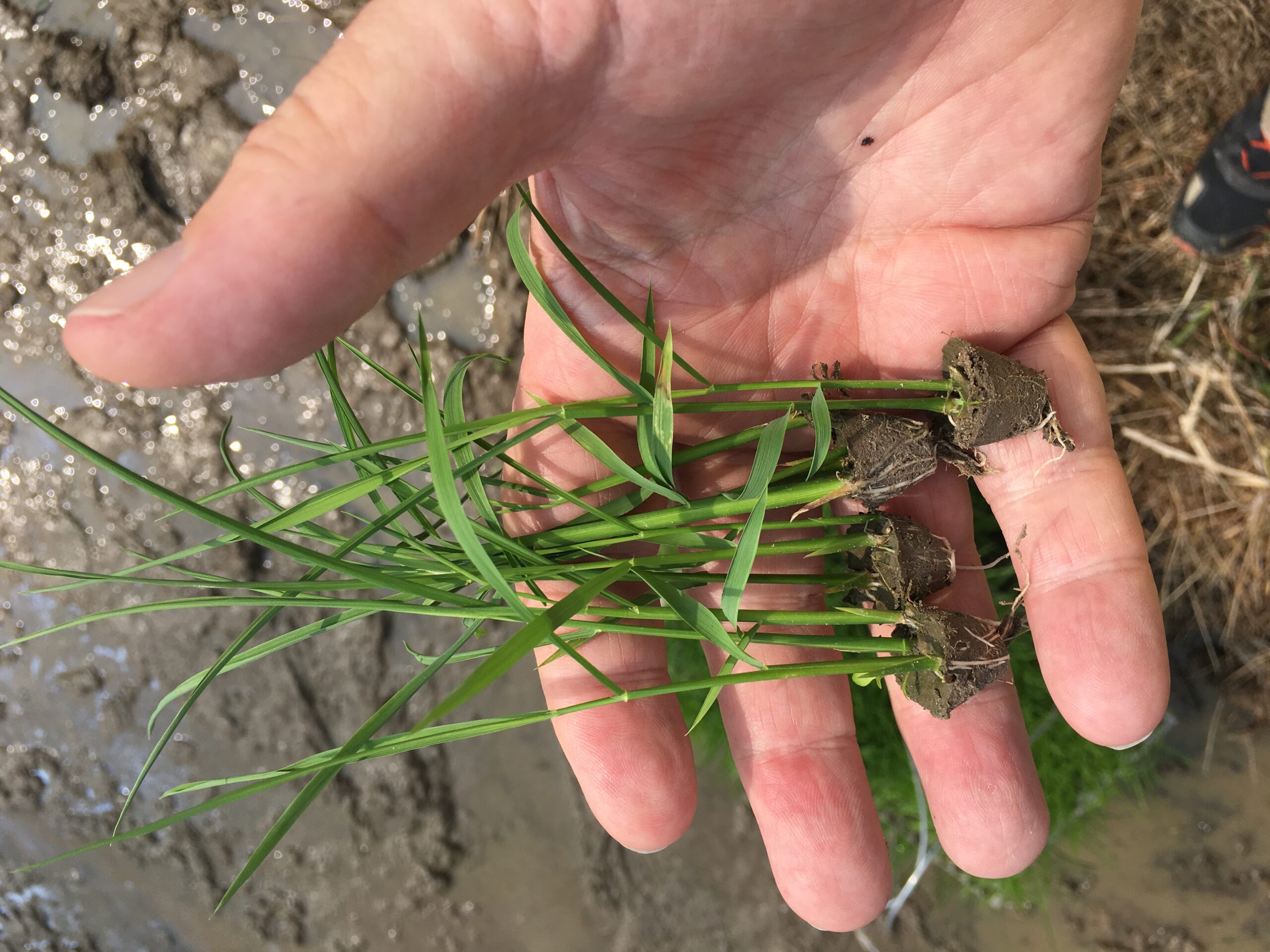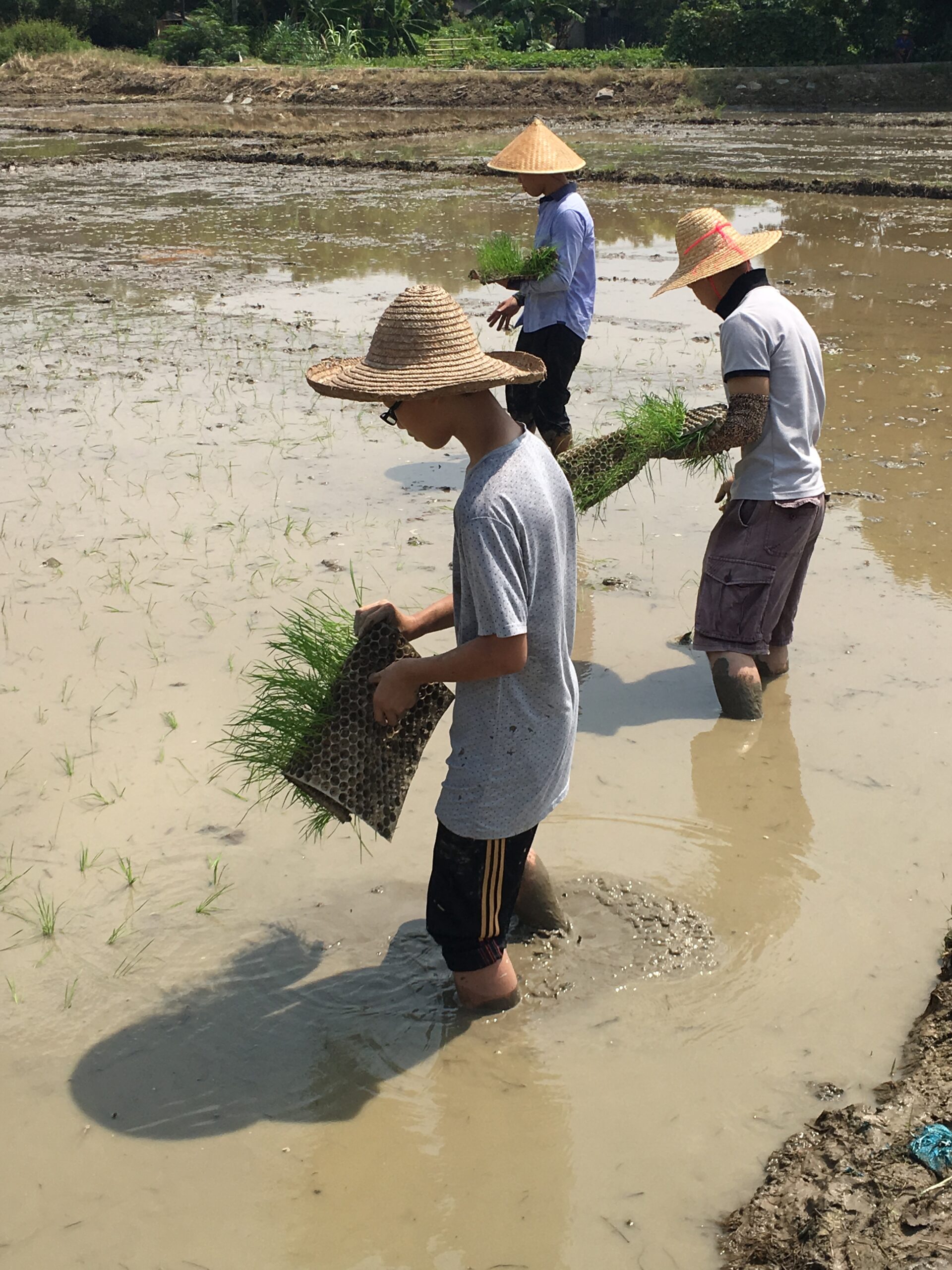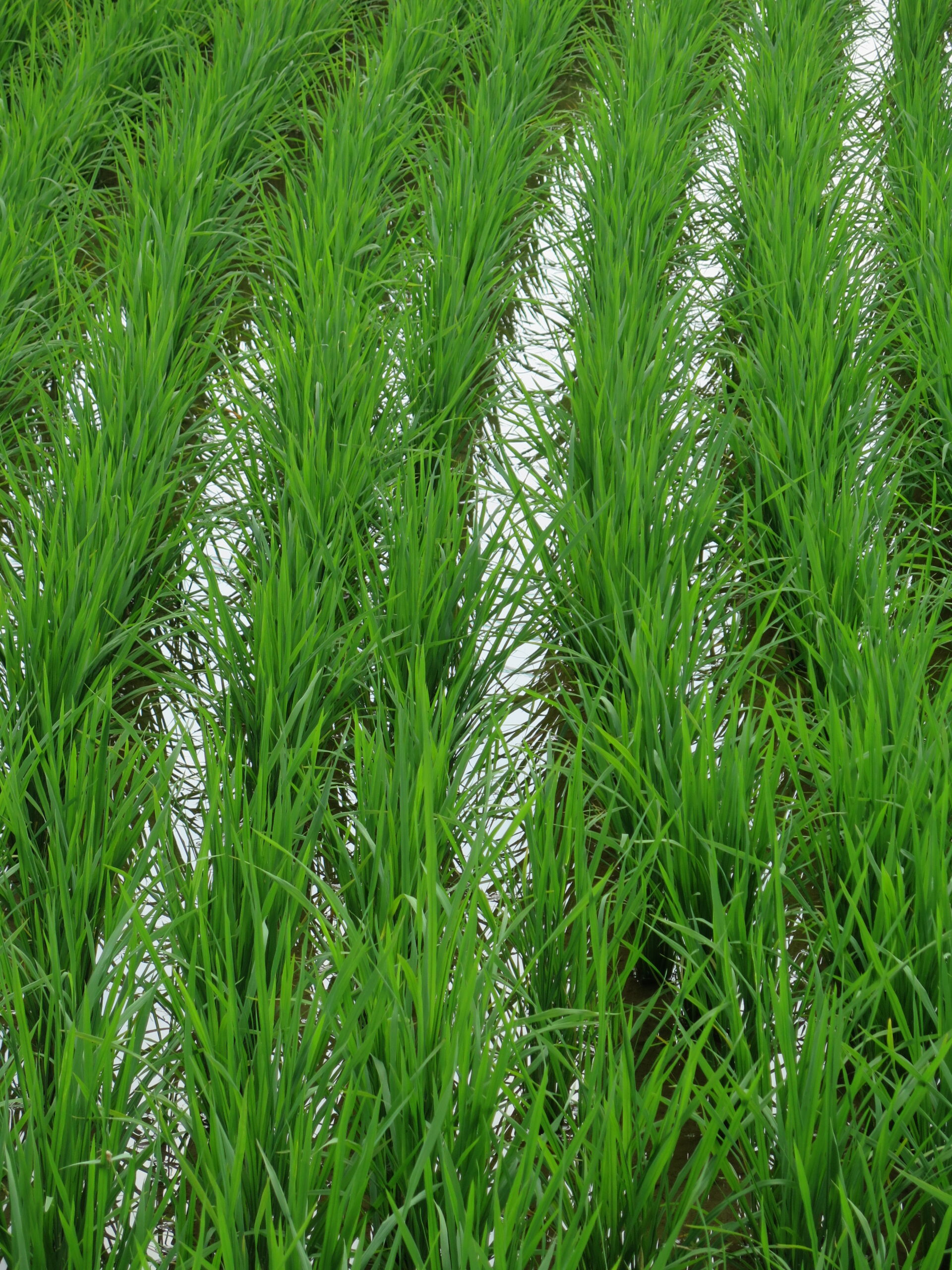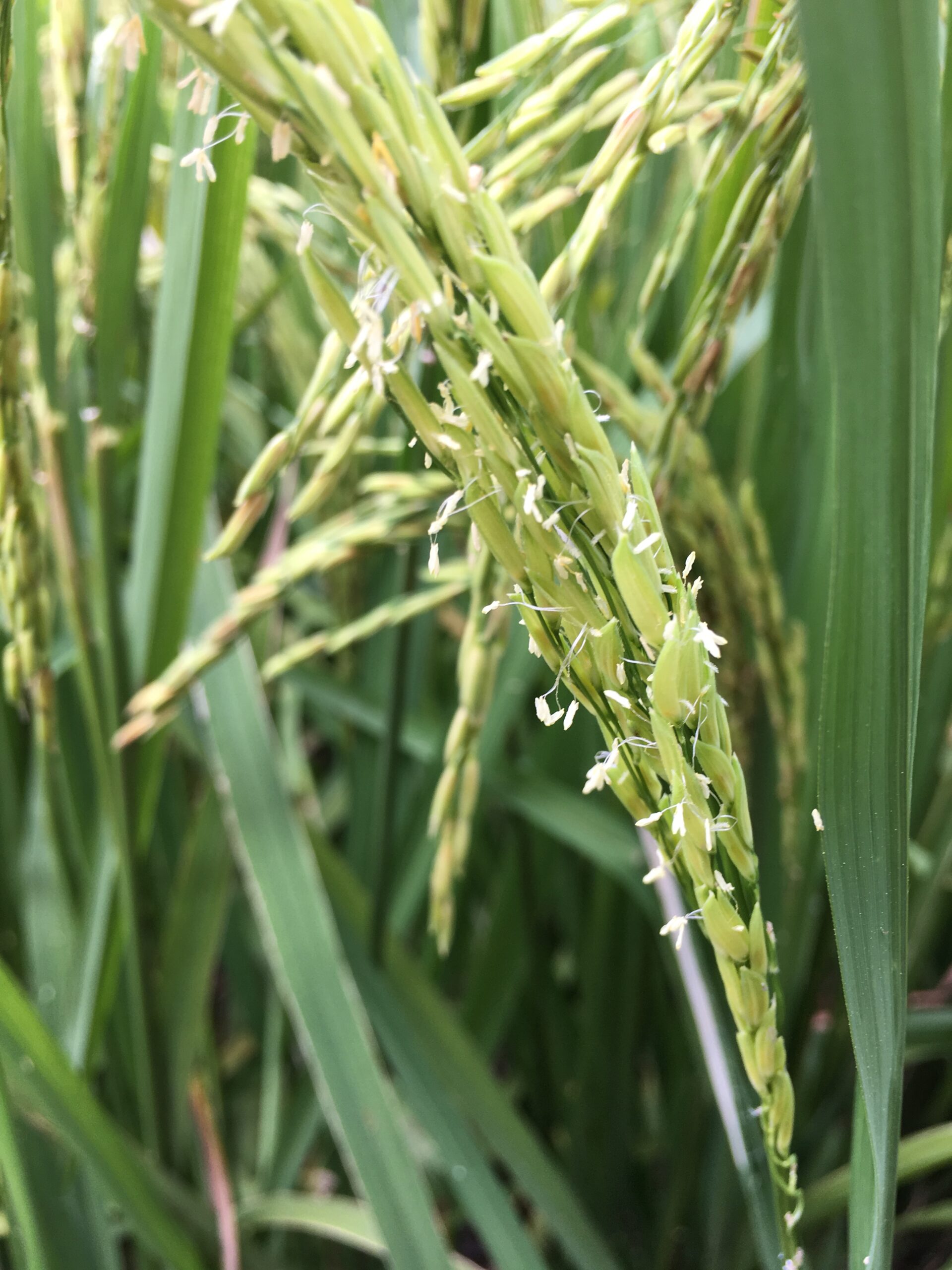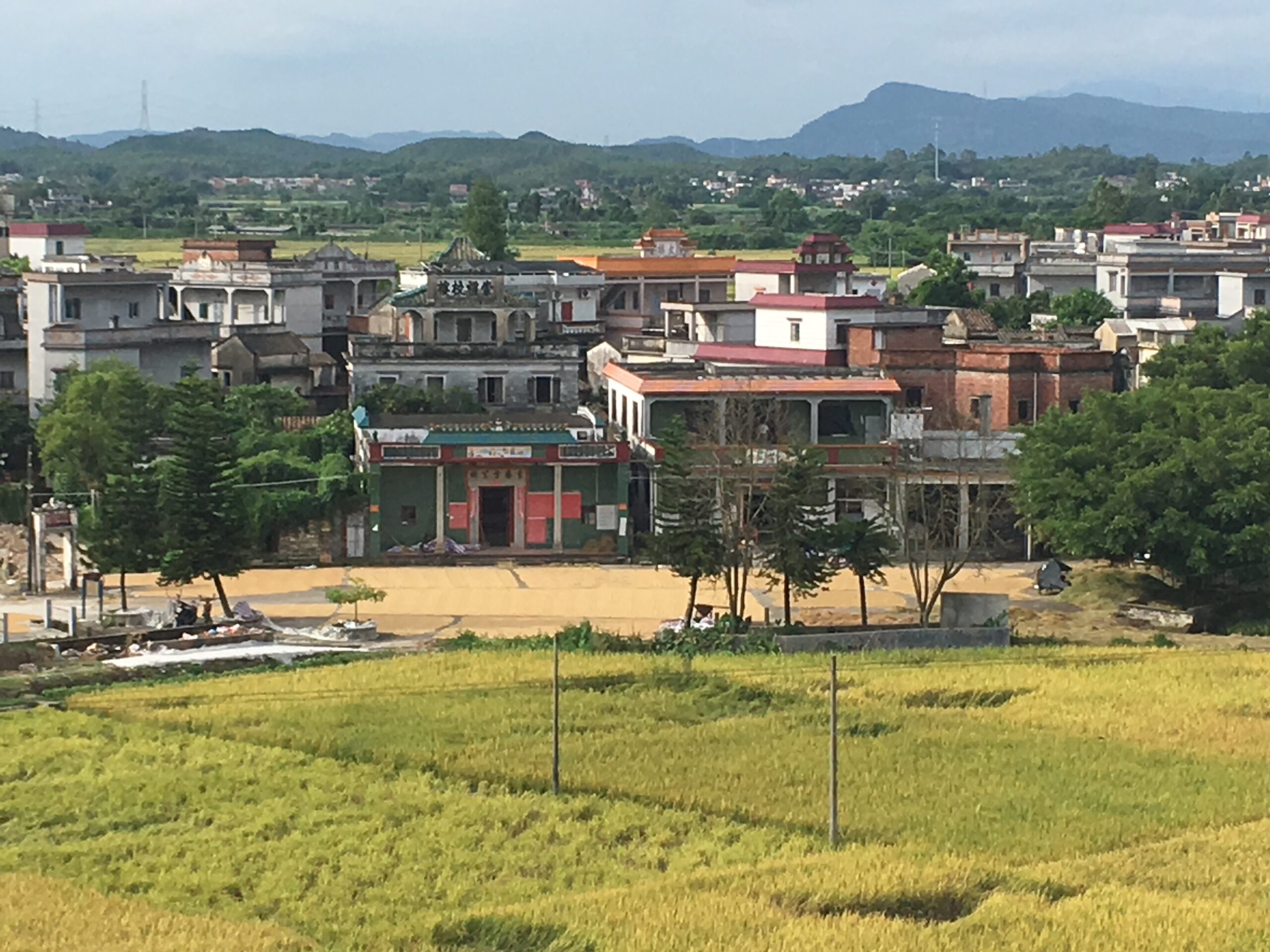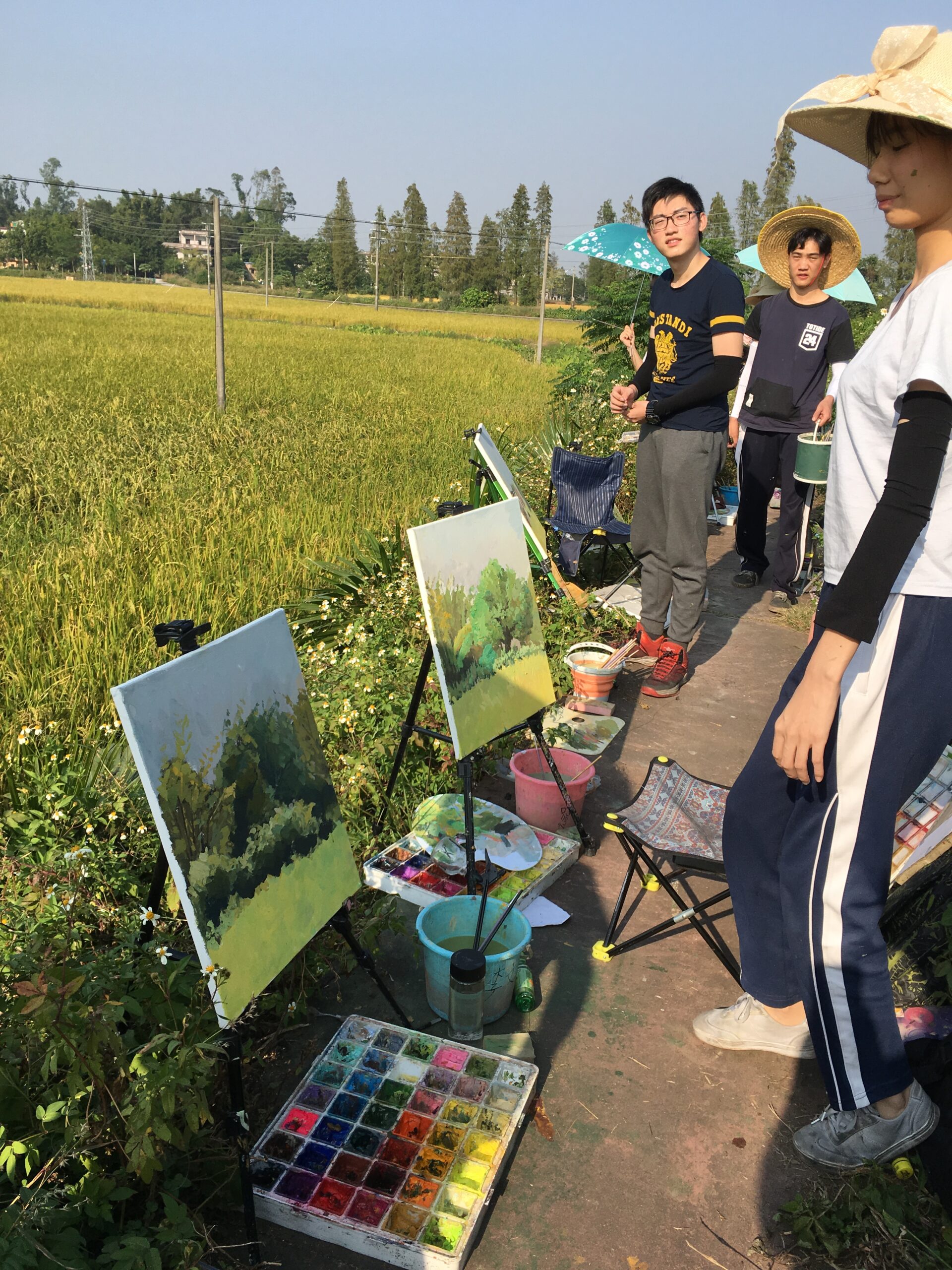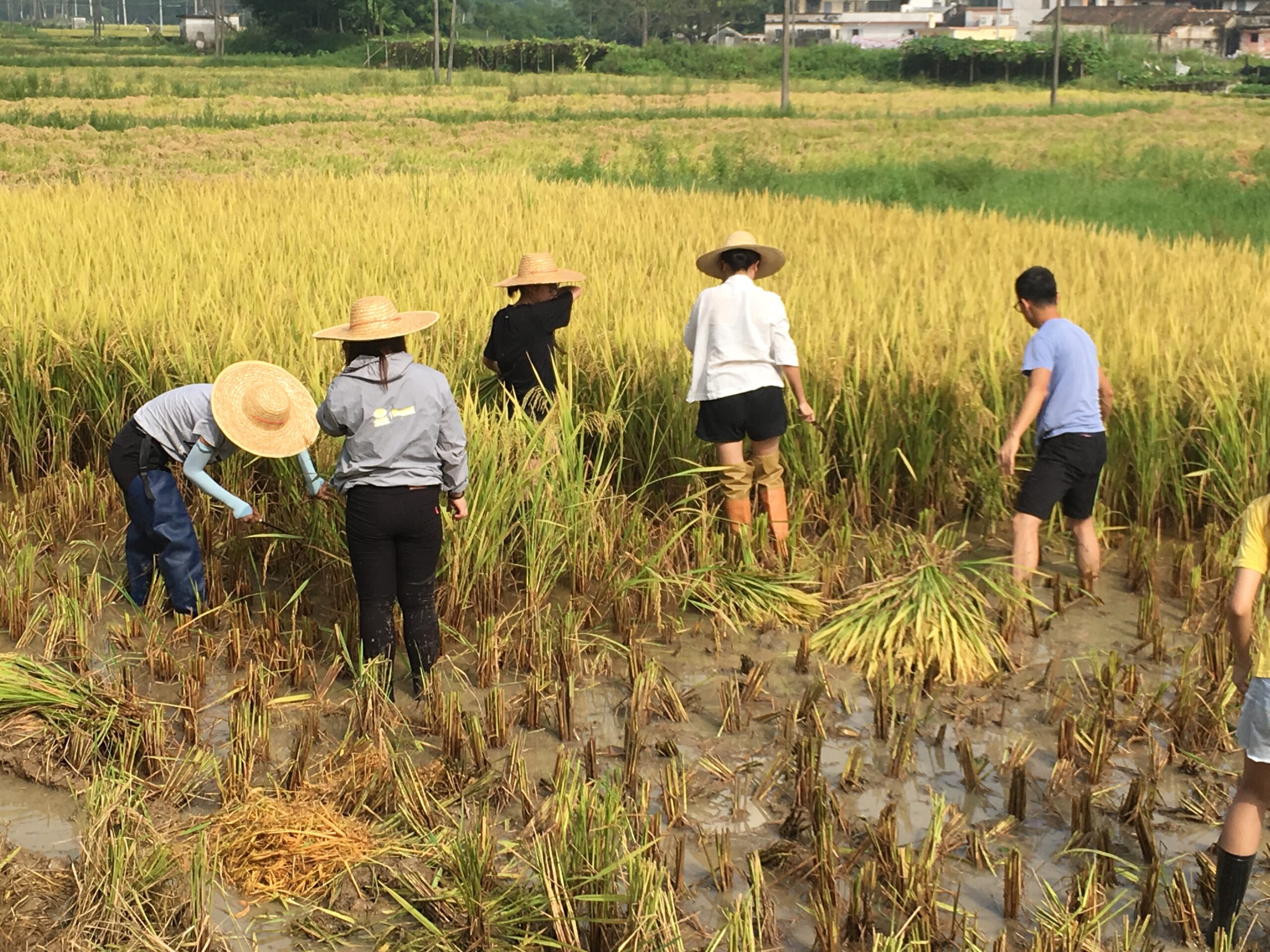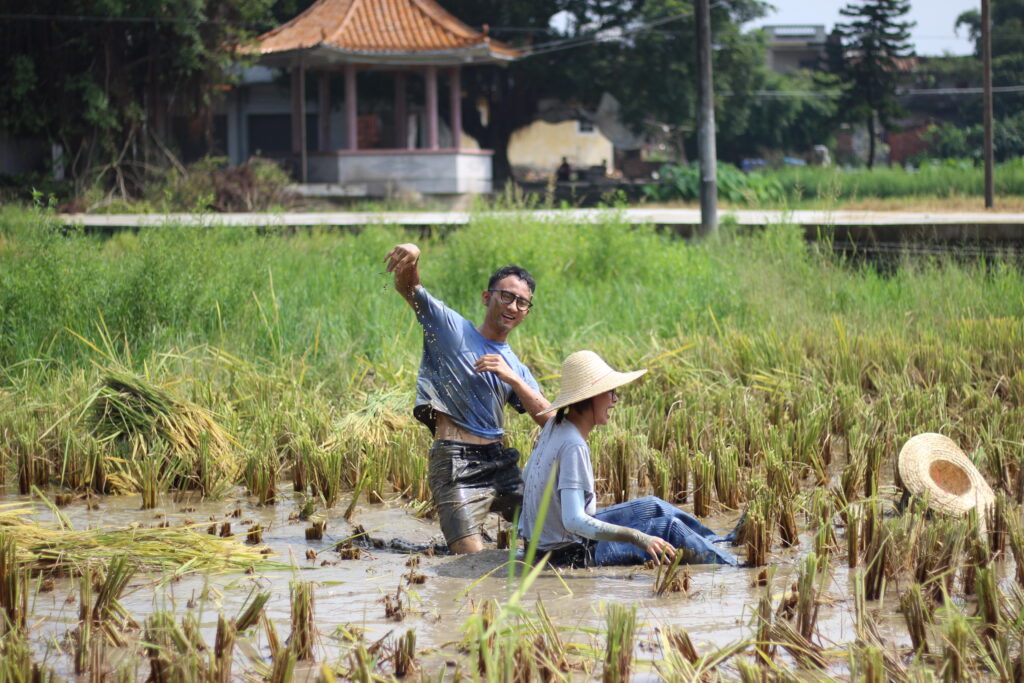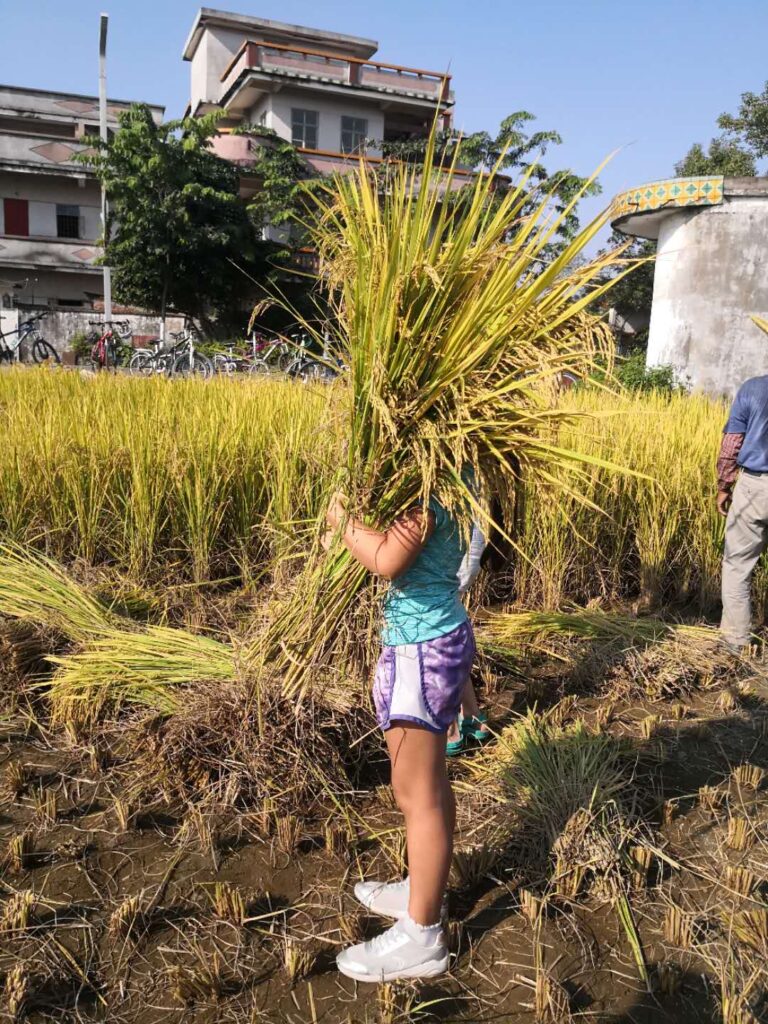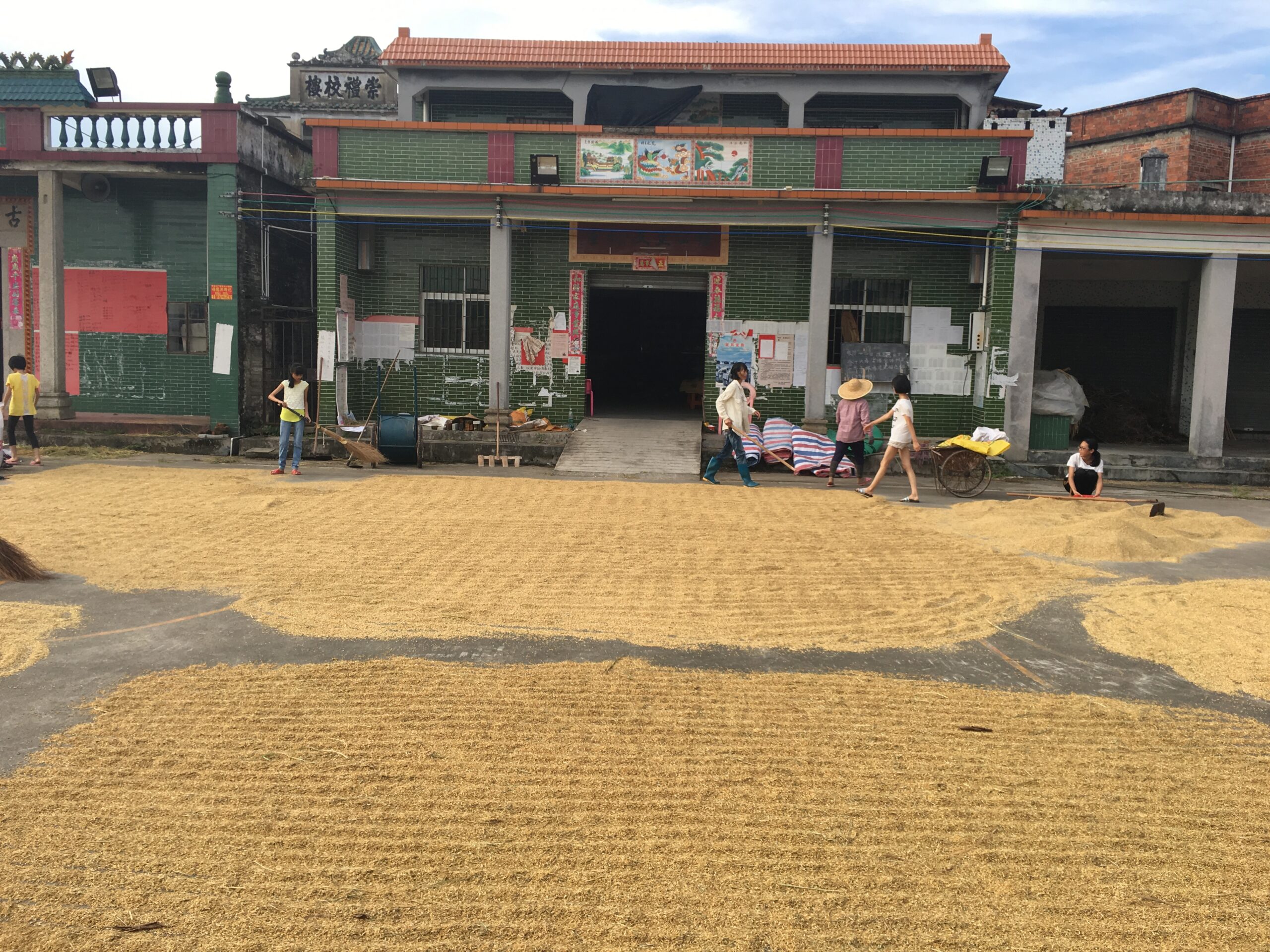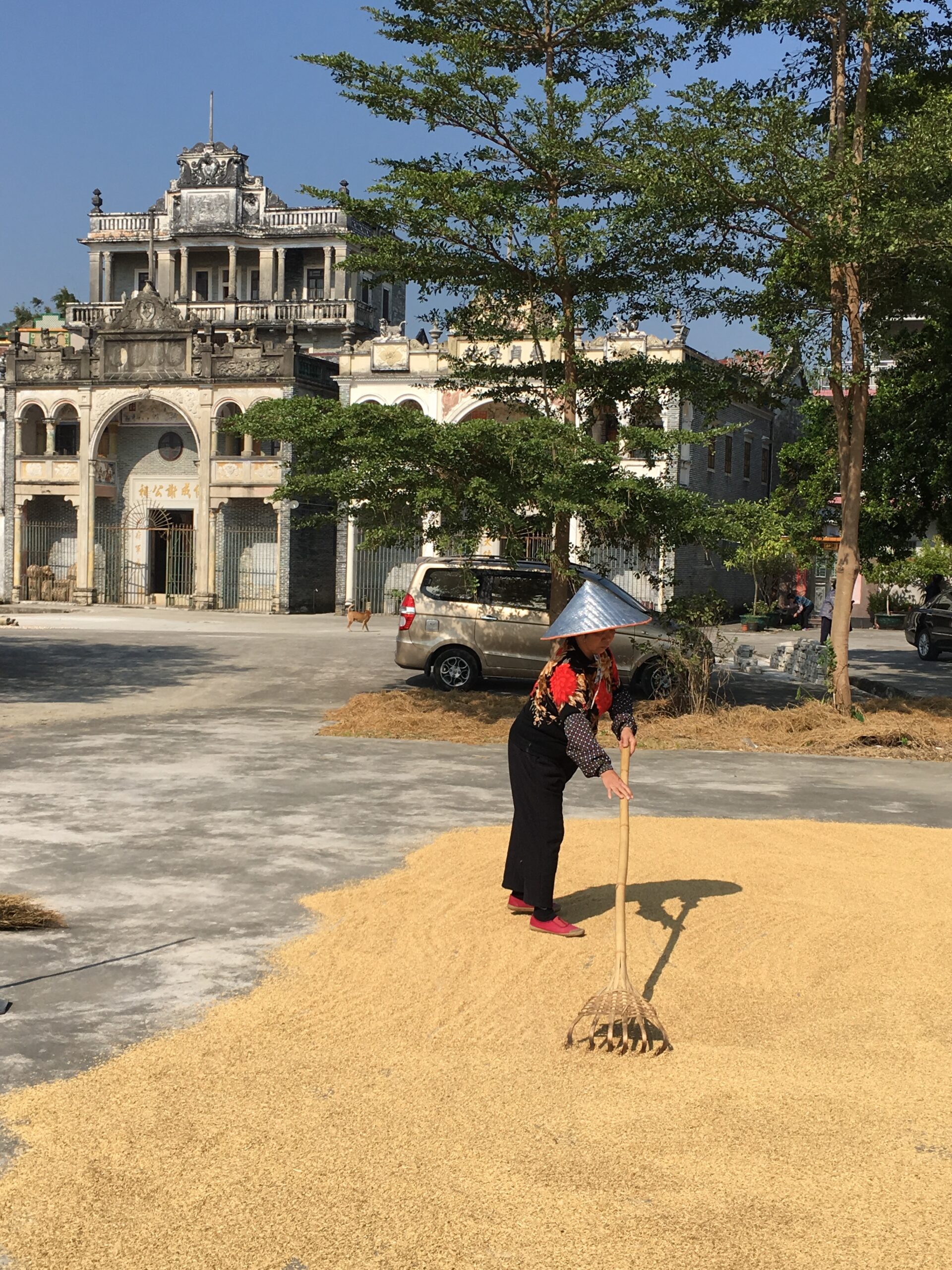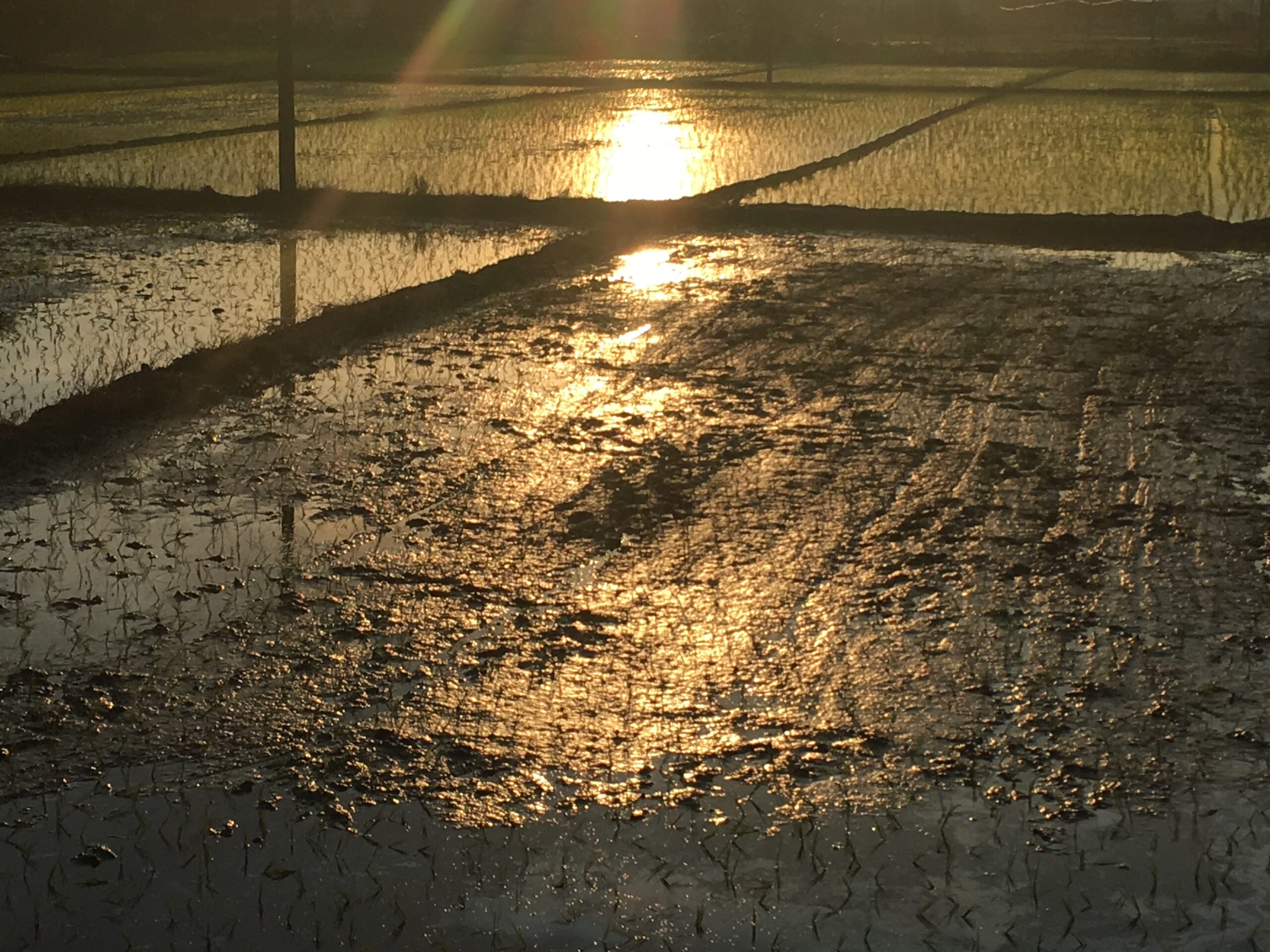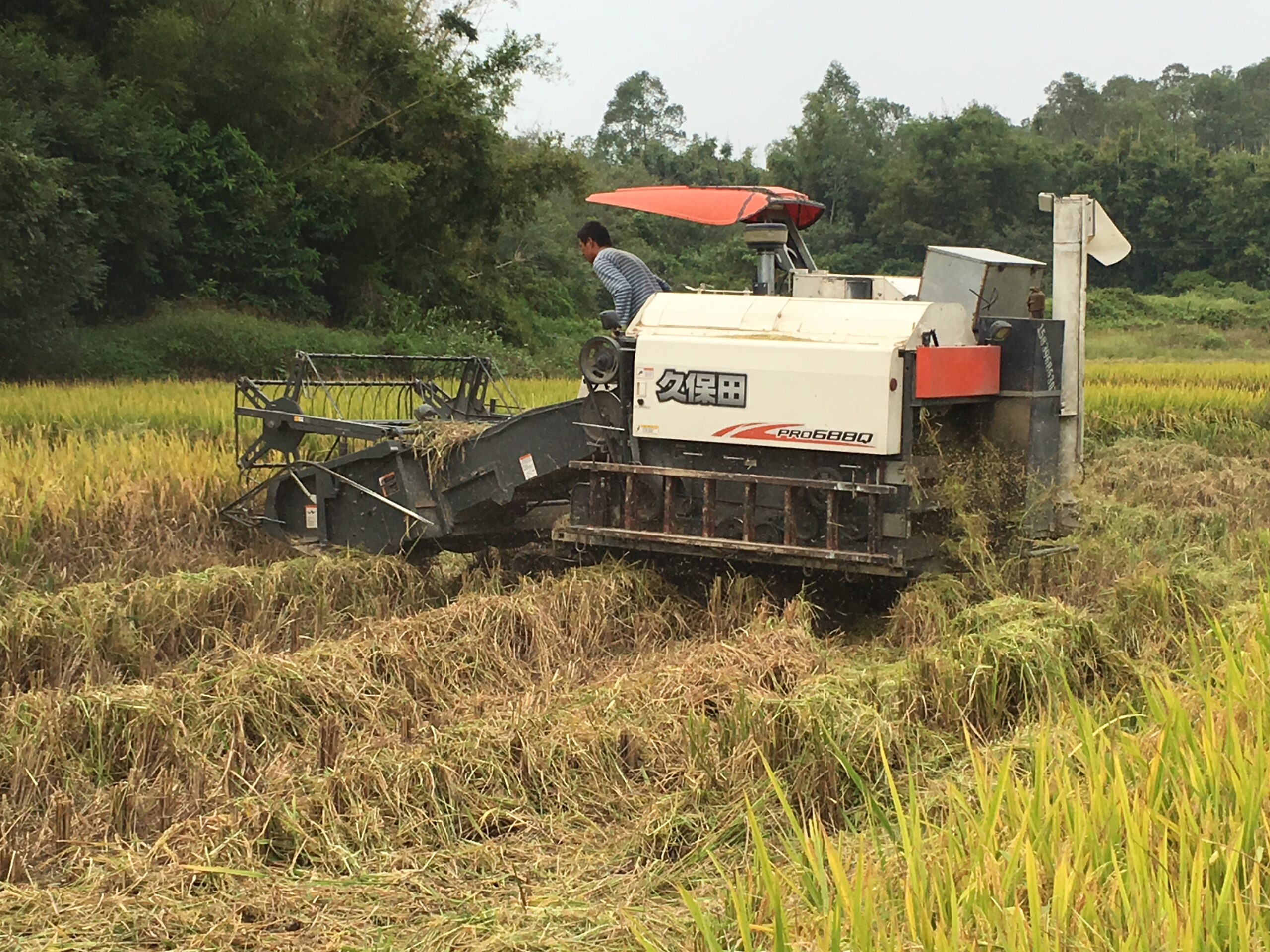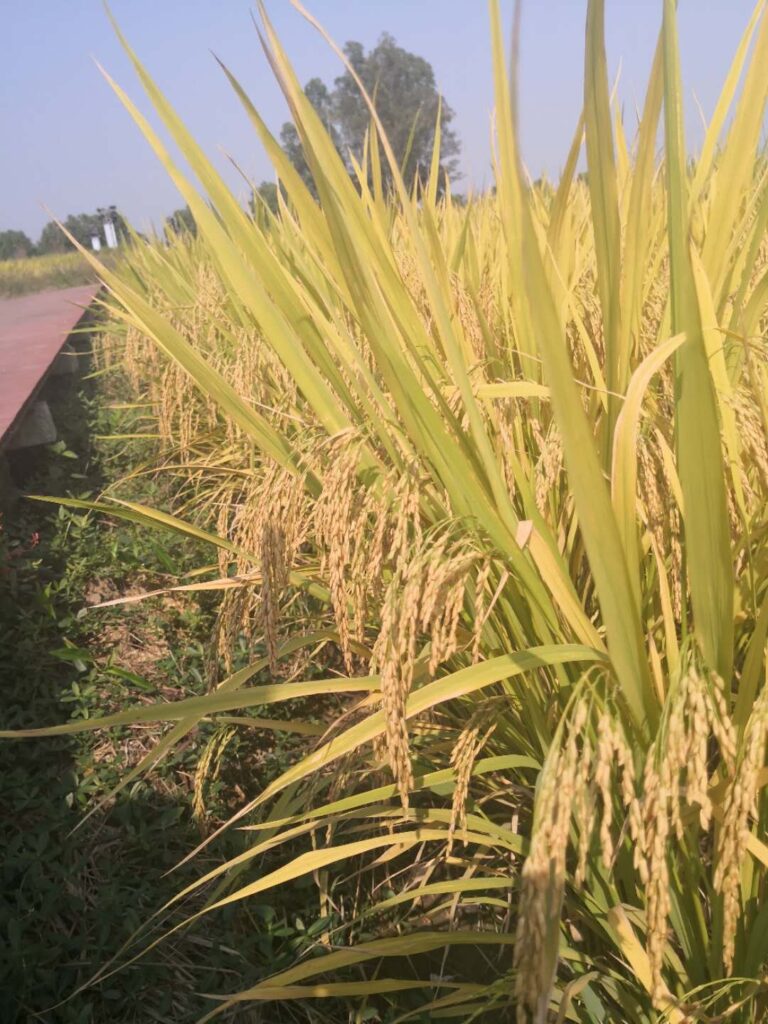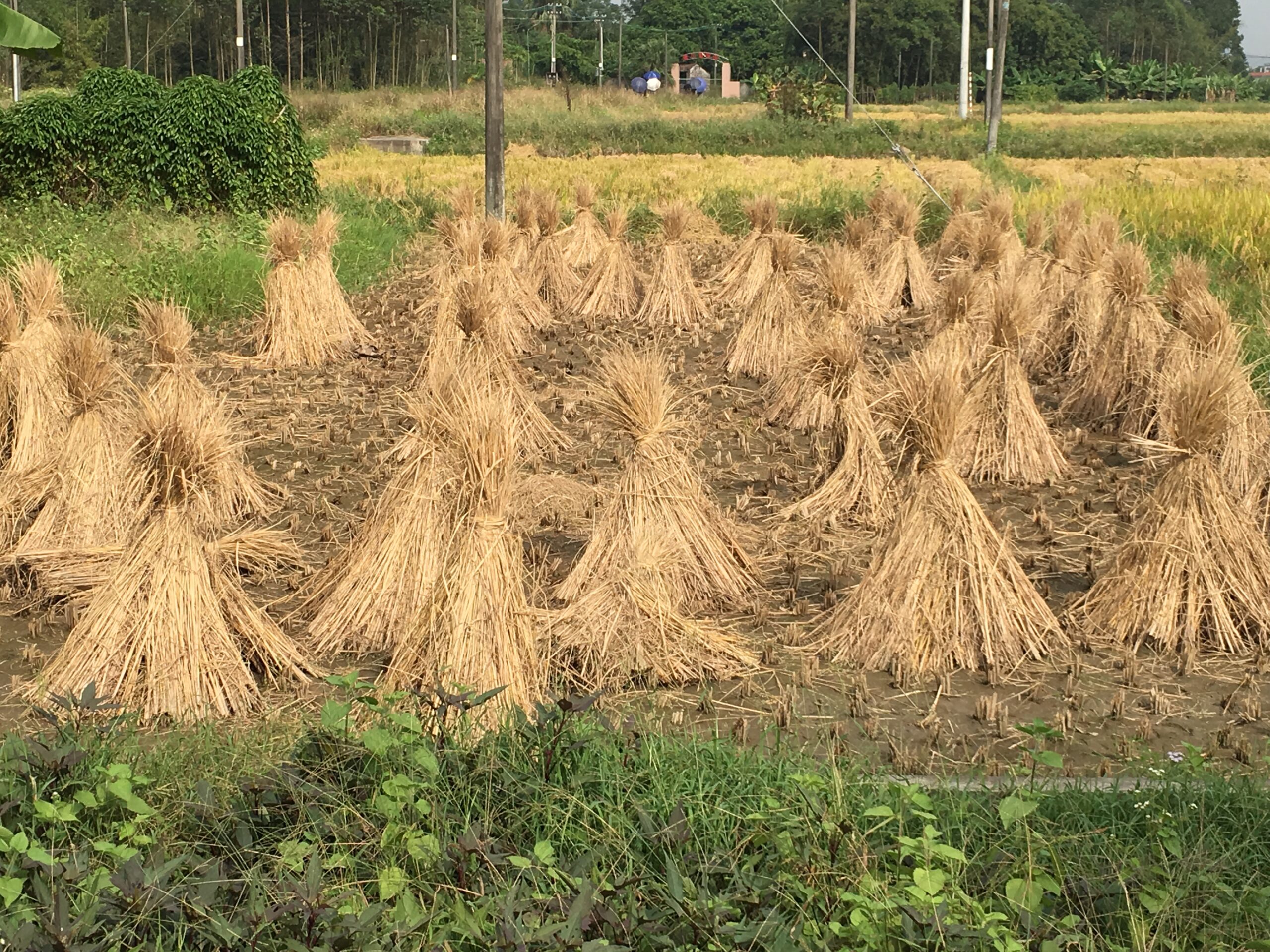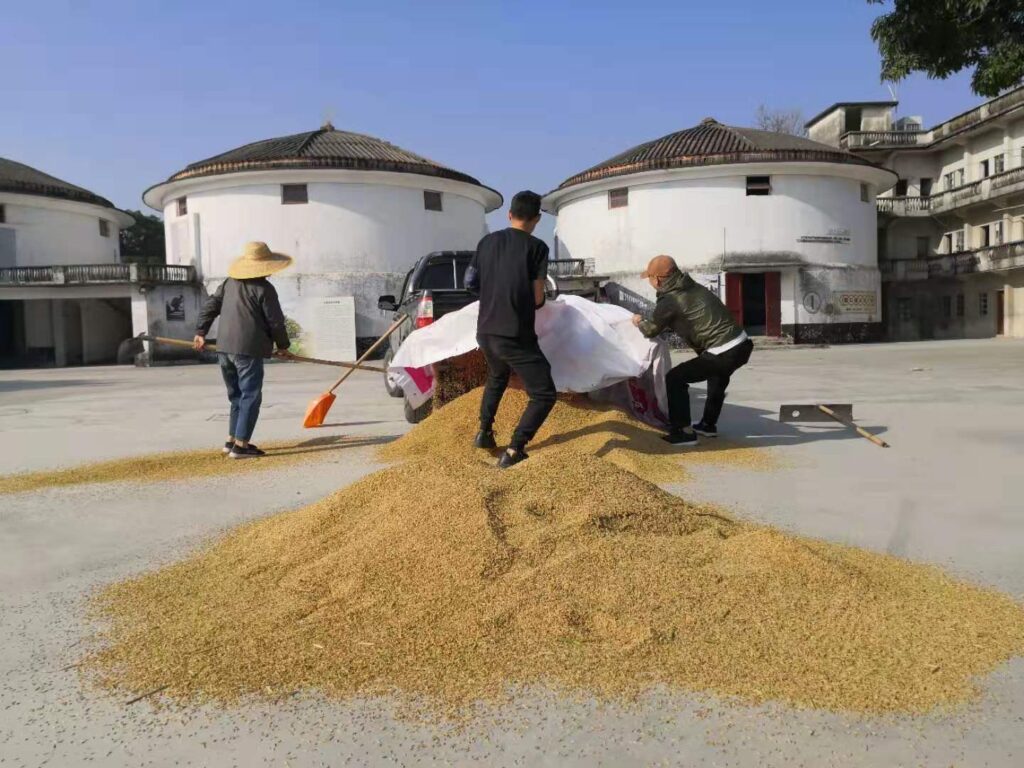TK Farm
Several of the Tangkou village ladies were getting older and had responsibilities with their grandchildren, while their children had moved off to Kaiping or beyond for work. The farmland between Tangkou Cun and the TK- Space was being neglected. TK- Space agreed with the villagers to rent some 30 mao (2 hectares) of fields. The fields are no longer intended to achieve maximum production so much as to provide an experimental, recreational and learning space. The footpaths and bunds are made deliberately wider than usual to facilitate access by visitors.
Less fertilizer and insecticide is used, though the farm cannot claim full “organic” status.
Visitors can explore and be involved in all stages of the farming according to the season, – from sowing seeds, transplanting seedlings, harvesting rice and picking fruit and vegetables. Villagers can still work the farm, but two additional local expert farmers are employed full time to assist. The farm serves as an education centre. About half the area is given to growing rice and there are typically 20 kinds of vegetables and 10 kinds of fruits being grown on the. other half at any one time. Some space is reserved for recreational activities such as building and using earthen ovens for baking chickens, a particular favourite and traditional activity around Chinese New Year. And, of course, the Tangkou Community Centre is assured of the freshest of vegetables!
In addition there are nearby commercial fields where villagers grow some cash crops such as water chestnut and taro in addition to the twice yearly rice crops.
RICE – ROUND THE YEAR AT TANGKOU
The Rice Growing Calendar:
Once the ploughing begins, the two cycles each year are similar in most respects.
January: The paddy fields are left dry and fallow from the previous crop. The villagers celebrate the Chinese New Year with holidays and reunions. In late January or in February the paddy is flooded to soften the soil before ploughing and to help rot the remaining stubble. Flocks of geese waddle through the paddy eating whatever grain, insects and frogs they can find.
February: After Chinese New Year in late February or early March the farmers start ploughing, turning the stubble into the soil to act as fertiliser and conditoner. Traditional ploughing using water buffalo is still done but tractor ploughing is much more common.
March: First, about 10 per cent of the field is ploughed and formed carefully to give several long elevated flat platforms separated by troughs. These troughs are flooded and the platforms made muddy. Light plastic perforated trays are placed in lines on the platforms again placing runny mud into the mats. Seeds from the previous harvest are soaked for a couple of days. About 6 kgs of seed are used for a projected harvest of 3,500 kgs. from 2 acres. The floating chaff is removed and the seeds germinate. They are then ready to be cast over the plastic mats and the platform is then covered with mesh sheeting supported by bamboo sticks to keep off birds. The mesh is secured with clumps of mud.
While the seedlings are growing the rest of the fields are ploughed. After about two weeks the seedlings have grow to 6 to 8 inches height and are ready to be transplanted into the paddy fields. The furrows are drained usually for a couple of days and the mats lifted and rolled up to be carried to the fields. Planting is at about 100 plants per sq. m. or slightly less. Most farmers transplant the seedlings by throwing them like darts, quite efficiently and with fair spacing, though a small minority of farmers still bend over to plant the seedlings laboriously by hand.
April/May/June: A couple of weeks after transplanting someone will go into the paddy removing weeds and filling gaps with further rice plants. The rice grows and the paddy looks its most attractive with an emerald green. The rice flowers and produces the seeds. The fields are kept flooded till a couple of weeks before harvest. This helps with weed and pest control so long as the rice is not covered by water.
July: The rice plants have turned yellow, the fields are drained and it is usually in the first half of the month that the first crop of the year is harvested. Most farms employ combine harvesters specially brought in from central China with their operators specifically for the harvest. The harvesters carry out the work amazingly quickly, often completing the allocated parts of the field within a day. If a combine harvester is used it will thresh the seeds and discharge them into bags. If the sheafs are cut by scythe they are threshed in a mobile machine to release the seeds
The old wooden hammer which used to be found in each village house kitchen is no longer used. The common simple threshers are powered by foot though some are mechanically operated.
The seeds are spread on the courtyard for a couple of days to dry before being swept up again and bagged ready for milling. They must be protected from any rain as they may lose 80% of their value if any rain dampens them. Everyone helps. Though the work is exhausting there is plenty of fun to be enjoyed. Artists find inspiration too!
The process for growing seedlings is repeated for the second crop. With ideal growing conditions, time is at a premium.
August: As in March the seedlings are grown intensively in their plastic mats at sections of the paddy. Within two weeks the plot is drained to firm up the soil around the roots, the mats are lifted, rolled up and the seedlings transferred to the main field areas to plant for the second crop of the year. Transplanting is carried out usually in the first half of August, from early morning till sunset and the workers take a well-earned rest in the heat of the day.
September/October: As in April, May and June the paddy is green again as the rice grows. The fields are again kept flooded till a couple of weeks before harvest.
November: The second crop is harvested, usually nowadays by a rice combine harvester such as the illustrated Kubota PRO 688Q specially brought into the area for a couple of weeks to harvest many fields.
This rice has grown more slowly than the first and is regarded as the better rice crop. The farmers prefer to keep more of this crop for themselves to eat. Again the seeds are spread out on the courtyard briefly for a couple of days to dry before bagging and milling. The full bags weigh about 35 kgs. The paddy fields are left dry to rest. While most of the crop is harvested by specialist teams of machine operators and rice combine harvesters brought in specially for the harvest, some minor areas are still harvested much more laboriously by the local villagers using traditional threshing machines, binding the stacks of straw by hand and carting the straw away for animal feed.

